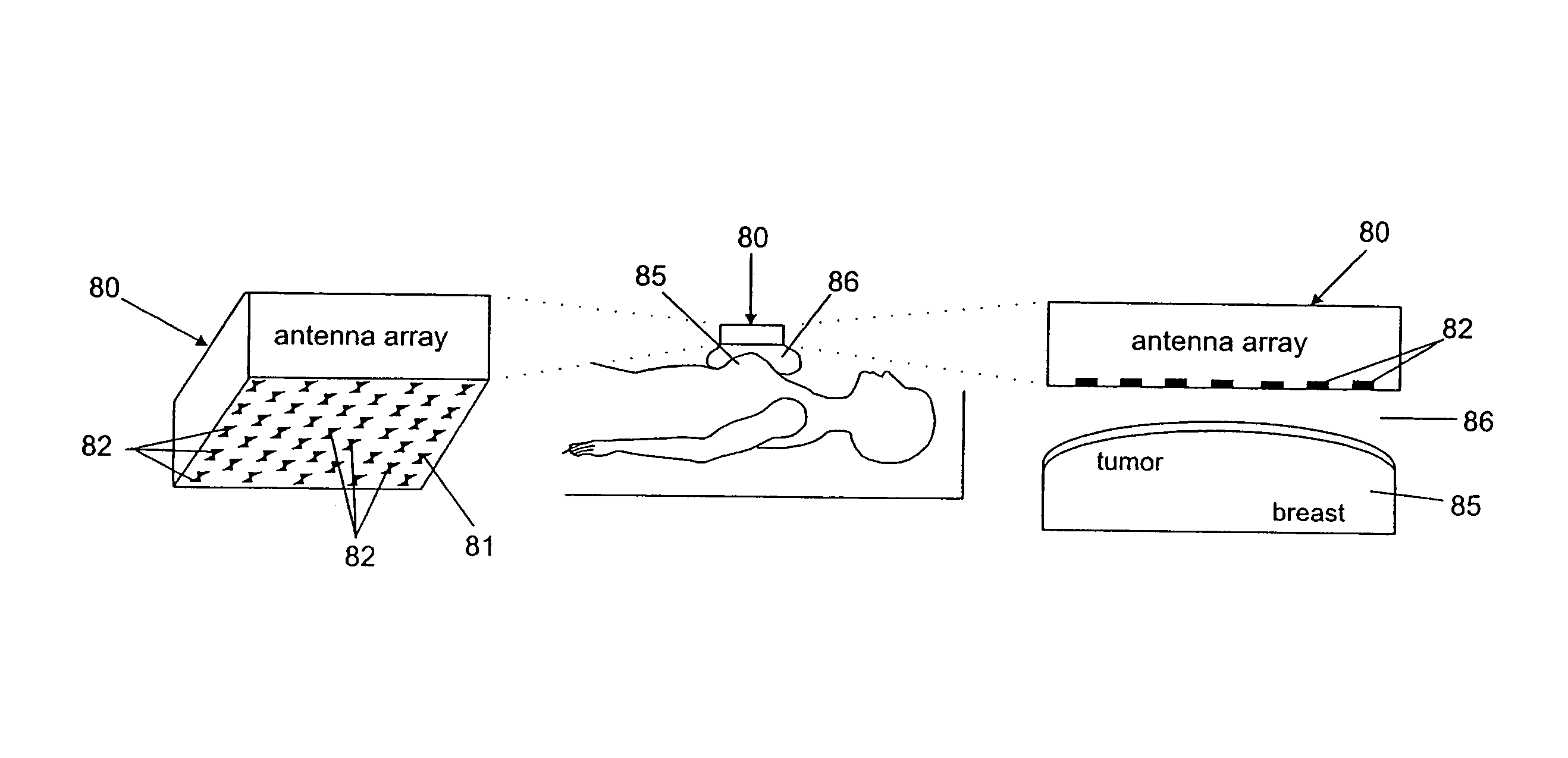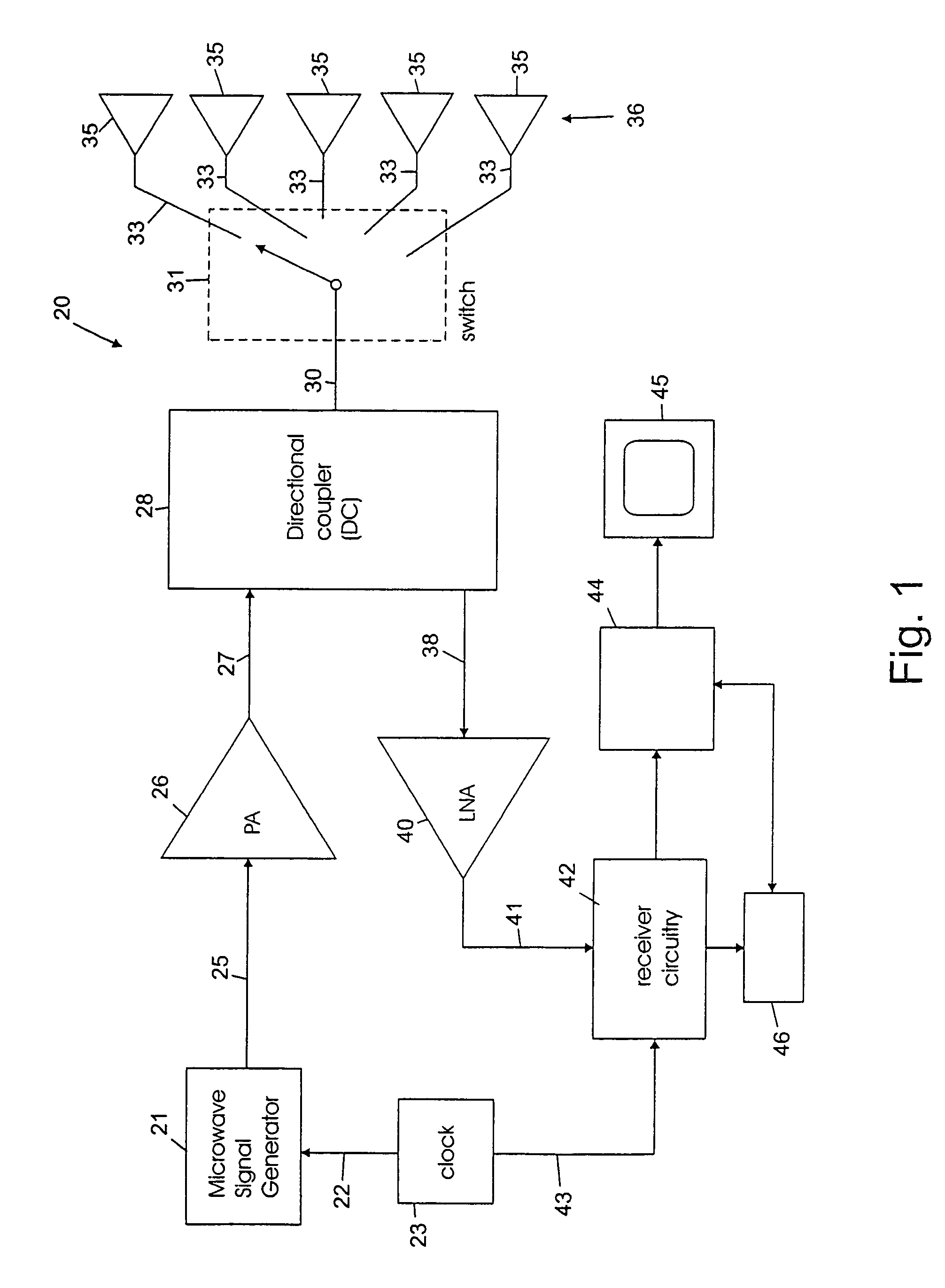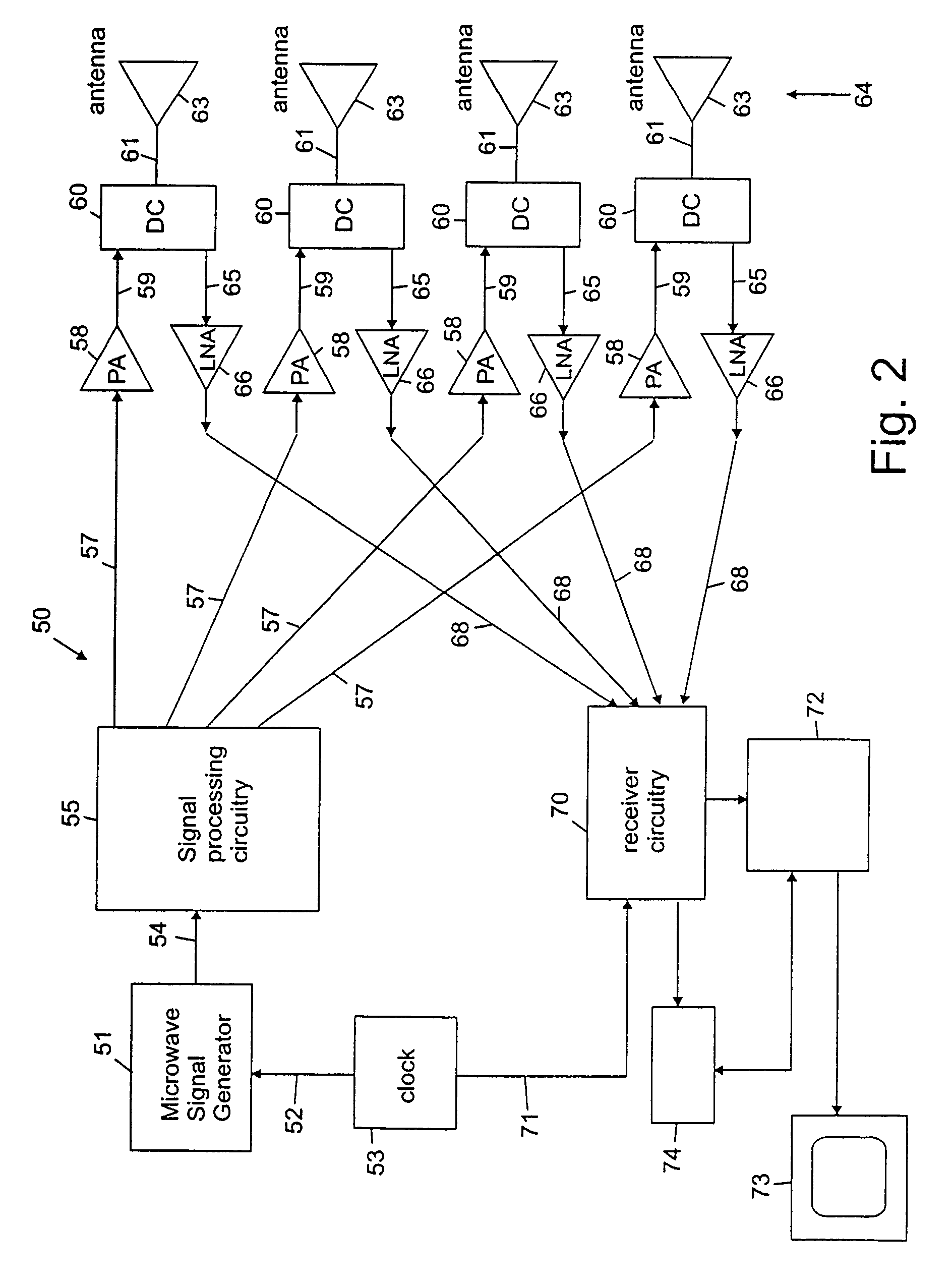Microwave-based examination using hypothesis testing
a hypothesis testing and microwave technology, applied in the field of medical examination and imaging, can solve the problems of low ionizing radiation exposure, painful breast compression, and relatively high false positive and false negative rates of x-ray mammography, and achieve reliable detection, avoid breast compression, and achieve sufficient sensitivity and resolution.
- Summary
- Abstract
- Description
- Claims
- Application Information
AI Technical Summary
Benefits of technology
Problems solved by technology
Method used
Image
Examples
Embodiment Construction
[0031]In one embodiment for carrying out the invention, each antenna in an array of antennas sequentially transmits wideband signals providing an effective low-power ultra-short microwave pulse into an object to be examined, such as the breast, and collects the backscatter signal. The relative arrival times and amplitudes of backscattered signals received by the antennas across the antenna array provide information that can be used to detect the presence and determine the location of malignant lesions. Breast carcinomas act as significant microwave scatterers because of the large dielectric-properties contrast with the surrounding tissue. The problem of detecting and localizing scattering objects using pulsed signals and antenna arrays is similar to that encountered in radar systems, such as those used for air traffic control, military surveillance, and land-mine detection.
[0032]Data in published literature and from our measurements on freshly excised breast biopsy tissue suggest th...
PUM
 Login to View More
Login to View More Abstract
Description
Claims
Application Information
 Login to View More
Login to View More - R&D
- Intellectual Property
- Life Sciences
- Materials
- Tech Scout
- Unparalleled Data Quality
- Higher Quality Content
- 60% Fewer Hallucinations
Browse by: Latest US Patents, China's latest patents, Technical Efficacy Thesaurus, Application Domain, Technology Topic, Popular Technical Reports.
© 2025 PatSnap. All rights reserved.Legal|Privacy policy|Modern Slavery Act Transparency Statement|Sitemap|About US| Contact US: help@patsnap.com



